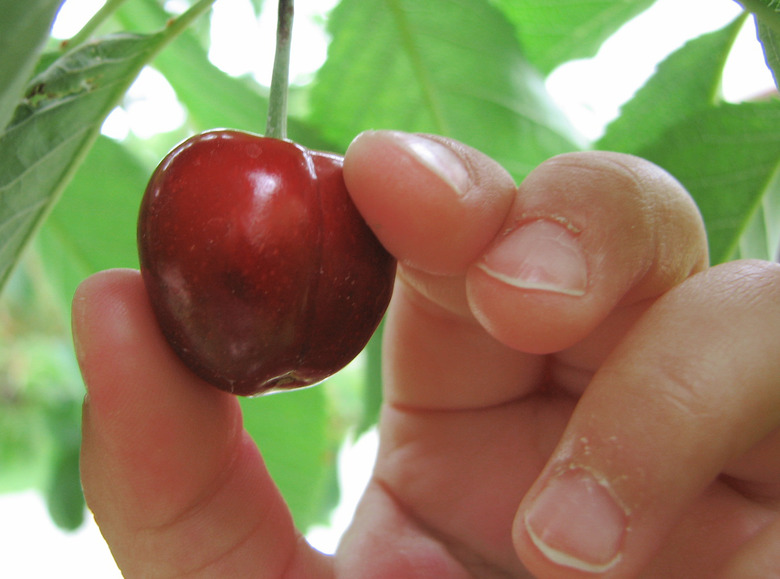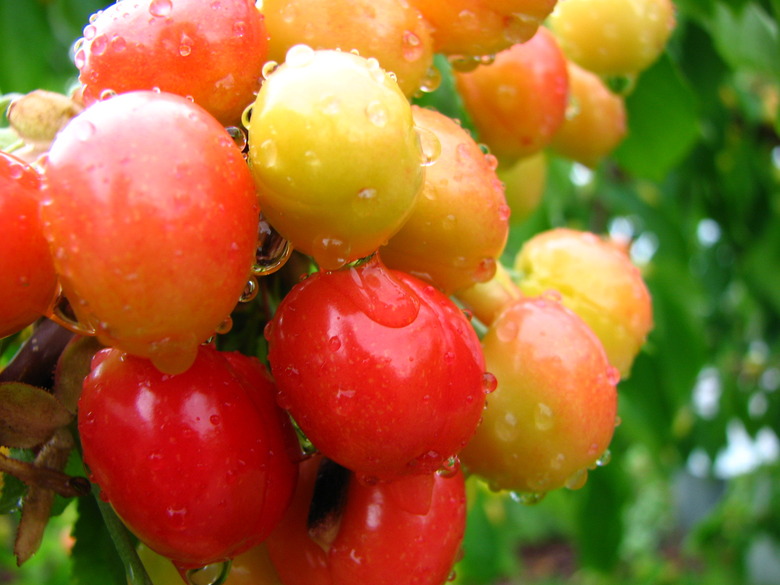How To Grow Bing Cherry Trees From Seed
While it's possible to germinate a Bing cherry tree seed and nurse a young seedling to adulthood, the resulting tree will not produce fruits similar to Bing; in fact, it may not produce fruit at all if there is not a nearby pollinizer.
Bing cherry trees (Prunus avium 'Bing,' USDA hardiness zones 5 to 8) are generally propagated via grafting, in which a stem from a Bing cherry tree is grafted onto a different cherry tree rootstock to control the size and characteristics of the tree while still producing Bing cherries.
Nonetheless, it might be fun to see what comes of germinating and planting a cherry seed from a Bing cherry tree.
Why Bing Cherries?
No wonder you want to grow a Bing cherry tree! Among the many varieties of sweet cherry trees, all of which are deciduous, the Bing cultivar is popular for its sweet flavor, robust color and easy-to-remove pit. Other popular cherry varieties include Rainier (Prunus avium 'Rainier') and Stella (Prunus avium 'Stella'), both of which grow in the same zones as the Bing cherry tree.
A Bing cherry tree grows to a mature height of about 35 feet and mature width of 25 feet. If you're growing a semi-dwarf cultivar, it will grow to 12 to 15 feet high and wide. Its growth rate is considered moderate, which is from 13 inches to 24 inches annually.
Growing a Bing Cherry From Seed
Before trying to germinate a Bing cherry seed, you need to simulate dormancy because the seeds of fruit trees are not fully developed when the fruit itself is ripe.
Germinating Bing Cherry Seeds
Before you pop a cherry seed into potting soil, give it time to mature, which is accomplished over time at cold temperatures that simulate winter. The easiest way to do this is to put the seeds in the refrigerator.
Tip
Cherry seeds require a period of dormancy before they will germinate, which you can simulate by storing them in the refrigerator for a few months.
First, allow the cherry fruit to ripen, remove the seeds from the cherry, and clean them to remove all the fruit. Air-dry the seeds first and then store them in a glass jar with a loose-fitting lid; some oxygen should be allowed to enter to prevent mold and dampness.
In about mid-January, mix the seeds with a medium such as peat moss, sand or even shredded paper towels. Place the jar in the refrigerator until your location's last spring frost and freeze. Cherries require from 90 to 140 days, called chill hours, of simulated dormancy.
Planting Cherry Seeds
After removing the seeds from the refrigerator, soak them in water for 12 to 24 hours before sowing them in 4-inch pots with no fertilizer. When the seedlings reach about 6 to 8 inches, apply a high-nitrogen fertilizer such as urea or ammonium sulfate. Ensure even moisture.
Cherry tree seedlings have taproots. When removing the tree from the pot to transplant into the landscape, cleanly cut off the taproot at about 5 to 6 inches, and plant the seedling in a full-sun location in well-drained soil.
Choose a landscape location with well-draining fertile soil, as cherry trees can develop root rot in waterlogged locations. During the growing season, water young saplings every two weeks or so.
After the first year, cherry trees require less frequent but deeper irrigation, depending on how hot the summer is.
How Bing Cherries Are Usually Propagated
Like most fruit trees, Bing cherry trees are not seed-propagated plants. Sweet cherries, of which Bing is one, are not self-fertile, meaning they cannot pollinate themselves. This ensures enhanced genetic variability over time but means that the seeds of sweet cherries are not recommended for propagation, because the resulting tree won't maintain the characteristics of the mother tree.
A cherry tree grown from seed will not only bear fruit that is different from the fruit it was encased in, but it may not bear fruit at all. If it does, production could be very low, because it needs a nearby (and compatible) pollinizer for cross-pollination.
In addition, a seed-grown tree may not be as hardy or as resistant to pests and diseases.

